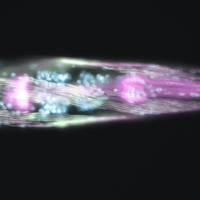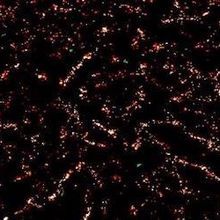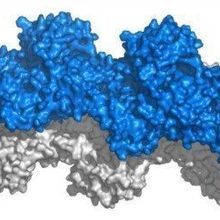Login
Subscribeactin

How Intracellular Bacteria Hijack Your Cells
Catherine Offord | Dec 1, 2022 | 10+ min read
Scientists studying pathogens such as Chlamydia, Legionella, and Listeria get a master class in how to control the internal workings of mammalian cells.

Infographic: Intracellular Bacteria’s Tricks for Host Manipulation
Catherine Offord | Dec 1, 2022 | 2 min read
Various microbes, including several human pathogens, hijack the cell’s skeleton, membranes, and protein-making machinery to make themselves at home.

Cancer Cells Gather Speed in Thicker Fluids
Holly Barker, PhD | Nov 22, 2022 | 4 min read
Viscous solutions accelerate the migration of tumor cells and may enable metastasis, according to a new study.

Cell Chirality Offers Clues to the Mystery of Body Asymmetry
Catherine Offord | Feb 1, 2022 | 10+ min read
Researchers explore the idea that molecular patterns in individual cells could underlie the development of a left and a right in animals.

Infographic: The Emergence of Chirality in the Cell Cytoskeleton
Catherine Offord | Feb 1, 2022 | 1 min read
Researchers use imaging to show how actin fibers tilt and then swirl to create left-right asymmetry in the cell.

Laurence “Larry” Kedes, Molecular Geneticist, Dies at 83
Amanda Heidt | Apr 26, 2021 | 4 min read
In addition to isolating the first protein-coding gene from a eukaryote, Kedes furthered scientists’ understanding of actin genes and also laid the foundations for modern DNA databases such as GenBank.

Derek Applewhite’s Actin Research Inspires the Next Generation
Lisa Winter | Mar 1, 2021 | 4 min read
The biologist’s undergraduate-centered lab allows students to play a meaningful role in research.

Image of the Day: Worm Rocket
Emily Makowski | Dec 6, 2019 | 1 min read
See the winners of the American Society for Cell Biology’s fluorescence imaging competition.

Image of the Day: Actin Assembly
Emily Makowski | Sep 17, 2019 | 1 min read
Microtubules need actin to disassemble focal adhesions, allowing for cell movement.

Image of the Day: Organ Crosstalk
Carolyn Wilke | Mar 19, 2019 | 1 min read
Zooming in on the ovarioles of Drosophila could reveal links between muscles, nutrition, and the development of eggs.

Prachee Avasthi Explores How Cells Build and Maintain Cilia
Shawna Williams | Dec 1, 2018 | 3 min read
The University of Kansas professor is also known for her leadership among early-career researchers.

Image of the Day: Artificial Cell
Sukanya Charuchandra | May 31, 2018 | 1 min read
Researchers made a synthetic cell that can photosynthesize and make proteins crucial for cellular structure.

Image of the Day: Actin Burst
The Scientist and The Scientist Staff | Dec 6, 2017 | 1 min read
Researchers are looking at actin polymerization and calcium uptake in human cells to study mitochondrial division.

Image of the Day: Cell Scaffolding
The Scientist | Feb 27, 2017 | 1 min read
Human embryonic kidney cells use actin cytoskeletal networks to organize proteins on the surfaces of cell membranes.

May the Force Be with You
Ning Wang | Feb 1, 2017 | 10 min read
The dissection of how cells sense and propagate physical forces is leading to exciting new tools and discoveries in mechanobiology and mechanomedicine.

Infographic: Following the Force
Ning Wang | Jan 31, 2017 | 1 min read
Physical forces propagate from the outside of cells inward and vice versa.

Video: Watch Cells Crawl To Firmer Ground
The Scientist | Dec 10, 2016 | 1 min read
This collective migration, called durotaxis, depends on which cells get the best grip on a surface.

Physical Force Upregulates Gene Expression
Alison F. Takemura | Aug 24, 2016 | 2 min read
Applying a mechanical force that pulls on a cell stretches chromatin, facilitating transcription, scientists show.

The Handedness of Cells
Kerry Grens | Jun 17, 2015 | 1 min read
Actin—the bones of the cell—has a preference for swirling into a counterclockwise pattern.
